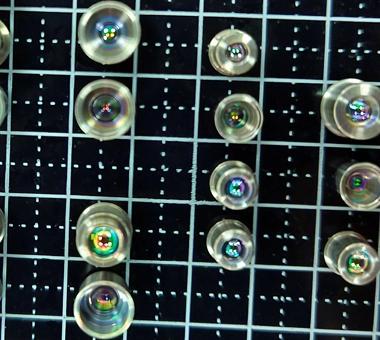
Call Us
86-755-82924037
Call Us
86-755-82924037
Proper thermal management is essential when operating laser diodes to prevent damage and ensure longevity. Key factors to consider include waste heat dissipation, maintaining optimal operating temperatures, and effective heatsinking. This article focuses on TO-Can laser diode packages, covering crucial aspects of heat management and best practices for efficient thermal control.
The Transistor Outline (TO-Can) package was designed for high reliability, often incorporating hermetic sealing and minimal thermal resistance to facilitate heat dissipation. Standardized under JEDEC (Joint Electron Device Engineering Council) guidelines, TO-Can packages help reduce costs while ensuring compatibility across different applications.
A TO-Can consists of two main components:
TO Header: Typically made of copper due to its excellent thermal conductivity, the header houses key internal elements such as the laser diode chip, photodiode, and sometimes a thermoelectric cooler (TEC).
TO Cap: Usually made of steel, the cap encloses the internal components, protecting them from contaminants like moisture and dust while securing optical elements such as windows or focusing optics.
One of the most common causes of laser diode failure is inadequate heat dissipation. For high-power TO can laser diodes, failure occurs rapidly if excess heat is not removed efficiently. Heat buildup can lead to immediate damage or significantly shorten the diode's lifespan.
To ensure proper heat management:
Use an adequate heatsink to dissipate waste heat.
Understand the efficiency of the laser diode, which typically converts only 10–60% of input power into laser light, with the remainder turning into waste heat.
Calculate waste heat by subtracting the laser's optical output power (Watts) from the total electrical input power (Amps × Voltage = Watts).
Ensure strong thermal contact between the TO-Can package and the heatsink to facilitate efficient heat transfer.

Heat transfer between the TO-Can base and the heatsink depends on:
Material Thermal Conductivity: Copper offers superior heat conduction compared to aluminum.
Surface Imperfections: Even minor irregularities at the interface between the TO-Can and heatsink can trap air, increasing thermal resistance. Using compression force or thermal interface materials (TIMs) can reduce gaps.
Thermal Interface Materials: Filling any remaining gaps with thermally conductive materials improves heat dissipation.
A useful formula for calculating thermal resistance:
Θ=TQ\Theta = \frac{T}{Q}Θ=QT
Where:
T = Temperature difference (°C)
Q = Heat power (W)
Θ = Thermal resistance (°C/W)
Each laser diode has a recommended operating temperature beyond which performance degrades significantly. Running the diode at higher-than-recommended temperatures exponentially reduces its lifespan, potentially leading to catastrophic failure. Conversely, operating below the recommended temperature can enhance efficiency and longevity.
However, extreme cooling (below 15°C) is only feasible in hermetically sealed environments with an inert gas (e.g., nitrogen) to prevent condensation, which can cause irreversible damage. Laser diode materials such as GaN (gallium nitride) and AlGaN (aluminum gallium nitride) are particularly susceptible to oxidation when exposed to oxygen.
All laser diode packages require heatsinking, with the specific design depending on power levels:
Low-power lasers: Can be mounted on a baseplate for passive cooling.
High-power lasers: Require larger heatsinks or forced air cooling to manage heat effectively.
Laser diode arrays: May need active cooling using water or thermoelectric coolers (TECs).
For temperature-sensitive laser diodes, larger package sizes provide greater surface area for efficient heat transfer.
Copper is the preferred material due to its superior thermal conductivity. Aluminum is also an option but should not be anodized in the contact area, as anodized aluminum oxide is an insulator and reduces heat transfer efficiency.
The heatsink surface should be flat and smooth (flatness: 0.5 µm, roughness: 0.5 µm) to ensure good thermal contact.
Bonding quality between the TO-Can and heatsink is crucial—void-free connections enhance heat dissipation.
Heatsinks may use air, water, or thermoelectric cooling depending on the laser's requirements:
Air-cooled heatsinks provide limited temperature control and fluctuate with ambient temperature changes.
Water-cooled systems maintain more stable conditions by circulating coolant (typically water) through a metal plate.
Thermoelectric coolers (TECs) provide precise temperature control and stabilize laser output performance.
Silver-filled epoxy can improve heat conduction in permanent installations, but only if it is a low outgassing, space-qualified type (e.g., Epoxy Technology H21D) to prevent contamination.
Indium foil spacers can reduce thermal impedance, but the improvement is usually marginal compared to a well-optimized copper-to-copper interface.
To verify the effectiveness of a heatsink design:
Temperature Drop Test – Use a thermocouple at the laser package base while operating the laser. The temperature drop between the package and the heatsink should be only 1–2°C.
Wavelength Stability Check – Compare the laser’s emission wavelength at the specified operating current. If the wavelength is significantly longer than the manufacturer’s datasheet value, poor thermal contact is likely causing excess heat buildup. For most laser diodes, the emission wavelength increases by approximately 1 nm for every 4°C rise in temperature.
By following these best practices, Solar Valley ensures optimal performance and longevity for TO-Can laser diodes by maintaining efficient thermal management.
Bldg. A Baolong Industrial Zone #491 Dalang South Rd. Longhua District Shenzhen China
Copyright © Shenzhen Solar Valley Scitech Development Co., Ltd. All Rights Reserved.